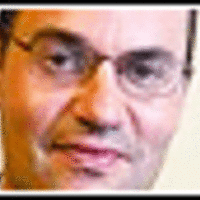Academic elites migrate to 'green cities' in increasing numbers
Loading...
The NY Times has a nice piece that quotes Glaeser and Moretti about the recent divergence in average human capital levels across US cities. To quote the article:
"The winners are metro areas like Raleigh, N.C., San Francisco and Stamford, Conn., where more than 40 percent of the population has a college degree. The Raleigh area has a booming technology sector in the Research Triangle Park and several major research universities; San Francisco has been a magnet for college graduates for decades; and metropolitan Stamford draws highly educated workers from white-collar professions in New York like finance.
Metro areas like Bakersfield, Calif., Lakeland, Fla., and Youngstown, Ohio, where less than a fifth of the population has a college degree, are being left behind. The divide shows signs of widening as college graduates gravitate to places with a lot of other college graduates and the atmosphere that creates."
So, the authors are telling a path dependence story that college graduates want to live and work near others like them perhaps due to marriage markets and shopping and restaurant opportunities (see the work of Joel Waldfogel).
I would add that where the educated concentrate become "green" high amenity cities. Some of these places are exogenously great such as San Francisco but in other cases when the skilled concentrate in an area they vote for regulations and policies that endogenously boost the area's local public goods. Public schools in highly educated areas are likely to be of higher quality and the non-market local quality of life such as crime, pollution, green space are all likely to be nicer.
London used to be nasty before 1960 and made a transition to being a highly educated green city. Boston, NYC and Chicago have made a similar transition. Rents are higher in these cities and this pricing differential self selects people with money and or people with a taste for these amenities who are willing to sacrifice other consumption to live there.
The NY Times article does not explain why it matters if the U.S cities segregate by educational level. I would guess that the editors would claim that the social fabric of the nation would be stronger if people from different groups interacted more but is this true? Did it ever happen?
The article hints that college educated workers offer a positive spillover to those communities that attract them. Enrico Moretti's work has measured these effects in terms of how much higher are high school graduates' wages in cities with a larger % of college graduates living there. If the Mayors of Bakersfield and Lakeland know this, why don't they offer amenities and services to attract such individuals to move there?








